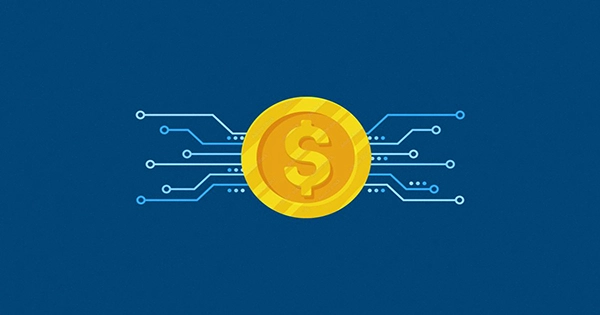Stablecoins are a sort of cryptocurrency connected to a relatively stable asset, such as the US dollar. The dollar is the benchmark asset for the bulk of the dozens of stable coins now in existence, although several are also tied to other fiat currencies issued by governments, such as the euro and yen. As a consequence, unlike high-profile cryptocurrencies like bitcoin and Ethereum, which are prone to dramatic ups and downs, the price of stablecoins is expected to move extremely little.
Tether was the first stablecoin, launched in 2014, and is the blueprint for many others. For every dollar deposited, users earn one token. The tokens may then, in principle, be turned back into the original money at any time at a one-to-one conversion rate. Tether had a market capitalization of around US$83 billion as of May 11, 2022, which was slightly less than half of the $172 billion market capitalization of all stablecoins globally. The second-largest cryptocurrency is the USD Coin, which has a market capitalization of almost $49 billion.
Because many cryptocurrency exchanges lacked access to traditional banking, stablecoins were initially used to acquire other cryptocurrencies like bitcoin. They are more helpful than country-issued currencies since they may be used throughout the world at any time, seven days a week, without relying on banks. Money transactions are completed in a matter of seconds. Another advantage of stablecoins is that they may be used with blockchain-based smart contracts, which, unlike traditional contracts, do not require legal permission to be implemented.
The parameters of the agreement, as well as how and when money will be distributed, are automatically dictated by the software code. Stablecoins can be programmed in ways that dollars cannot. Stablecoins are being used in loans, payments, insurance, prediction markets, and decentralized autonomous organizations (companies that function with little or no human interference) thanks to smart contracts.
Decentralized finance, or Defi, is the umbrella term for various software-based financial services. Stablecoins, according to proponents, is quicker, cheaper, and easier to integrate into software than fiat cash. Others argue that the absence of regulation puts the financial system in danger. Economists Gary B. Gorton and Jeffery Zhang compare the current situation to the middle of the nineteenth century when banks introduced their own private currencies.
They believe stablecoins would produce the same difficulties as in the past when there were regular runs due to disagreements about the value of privately issued currencies. In May 2022, a so-called algorithmic stable coin is known as TerraUSD, or UST, fell in value, serving as a reminder of those hazards. To keep their peg, algorithmic stablecoins employ a complicated technique of burning or producing tokens for profit. Regulators have recently been more interested in these concerns as a result of them.















